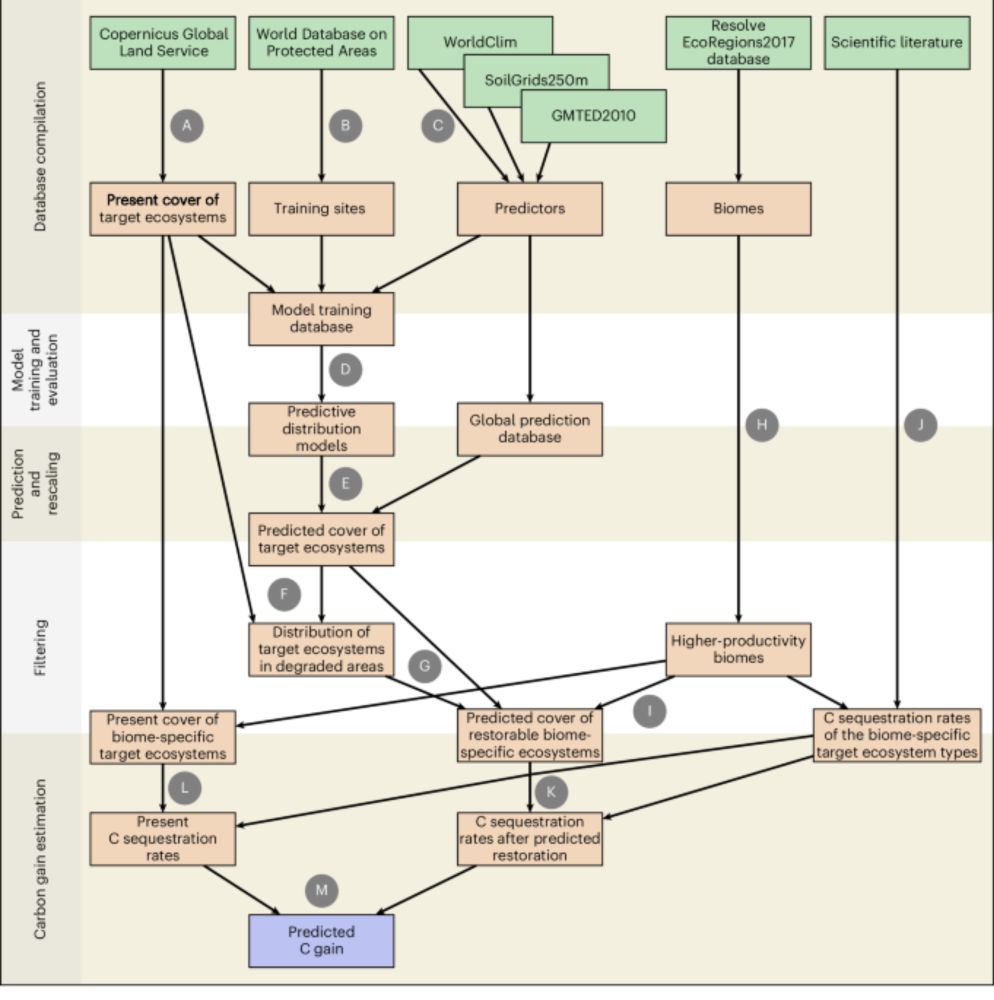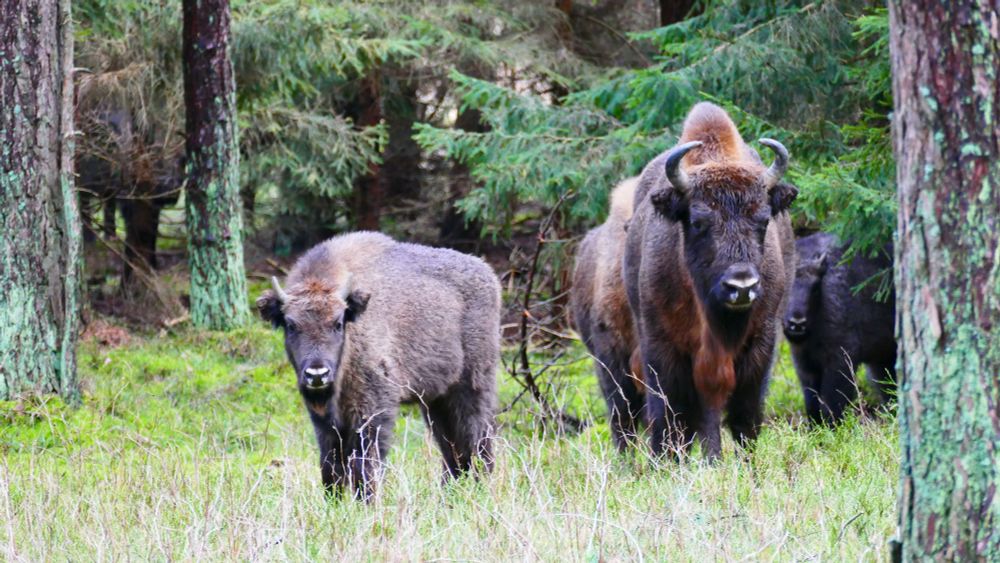
fluxible: An R package to process ecosystem gas fluxes from closed‐loop chambers in an automated and reproducible way
Measuring ecosystem gas fluxes is crucial to understanding the dynamics of ecosystem water and energy cycling. A common method to measure ecosystem gas fluxes (CO2, CH4, N2O) and to compare experi...
My first PhD paper is out!
It describes the fluxible #rstats package, a toolbox to process and quality check #ecosystem #gasfluxes in a reproducible and automated way.
@unibergen.bsky.social @btwnthefjords-uib.bsky.social @bjerknes.uib.no @li-corenv.bsky.social @methodsinecoevol.bsky.social
25.09.2025 11:38 — 👍 36 🔁 11 💬 2 📌 0

Debating the aesthetics of #wind & #solar is a luxury. The real crisis is climate change—threatening billions with deadly heat & catastrophic ecosystem breakdowns ♨️🥵🔥 Green #energy is a necessity🍃 Challenges exist (noise, land use) but are manageable - biggest risk is inaction #dkpol #climatechange
21.09.2025 09:40 — 👍 130 🔁 40 💬 9 📌 2

PhD Research Fellow in global change ecology (285493) | University of Bergen
Job title: PhD Research Fellow in global change ecology (285493), Employer: University of Bergen, Deadline: Wednesday, October 1, 2025
Come work with us!
Fully funded #PhD position in global change ecology - working in a cross-disciplinary cohort of 8 PhD students studying mountains in transition. 🧪🌐🏔️ @btwnthefjords-uib.bsky.social @cesam-uib.bsky.social
www.jobbnorge.no/en/available...
28.08.2025 18:27 — 👍 34 🔁 38 💬 1 📌 1

New paper: 3rd chapter of Anne Graser's PhD thesis now published: How #forest disturbance, post-disturbance management and wild #ungulates affect #moth communities: besjournals.onlinelibrary.wiley.com/doi/10.1111/...
@jappliedecology.bsky.social
28.08.2025 14:32 — 👍 22 🔁 8 💬 1 📌 0
Team: It was a pleasure working with a great team from @econovoau.bsky.social, the Bavarian Forest NP and @wild-ecol-cons.bsky.social, including @andrewabraham.bsky.social, Walter Di Nicola, Uriel Gélin, Martin Gahbauer, Marco Heurich and Elizabeth le Roux. (5/5)
17.08.2025 12:47 — 👍 3 🔁 0 💬 0 📌 0
Takeaway: A solution to one problem (deer-human conflict) may inadvertently shift landscape chemistry and compromise conservation goals, highlighting the need to critically evaluate all potential consequences of common management approaches such as supplementary feeding. (4/5)
17.08.2025 12:47 — 👍 3 🔁 0 💬 1 📌 0
Why it matters: These elevated nutrients could cascade through the ecosystem and for example affect soil microbial activity, alter plant communities, and even affect other herbivores. (3/5)
17.08.2025 12:47 — 👍 3 🔁 0 💬 1 📌 0

The figure shows the predicted plant nitrogen concentration in a radius of 2500m around the enclosures/feeding sites, clearly highlighting higher plant nutrient concentrations closer to the enclosures.
Setup & findings: In the Bavarian Forest NP (and many other places), managers use winter feeding to manage deer populations. We found this raises plant nutrient levels not just at feeding sites, but hundreds of meters beyond. Read the full paper for more detail!
(2/5)
17.08.2025 12:47 — 👍 3 🔁 0 💬 1 📌 0
Redirecting
I’m very happy to share our new paper “Intensive feeding modifies nutrient patterns in a strictly protected area” (doi.org/10.1016/j.je...), just out in Journal of Environmental Management. We explore underestimated consequences of a common management practice: supplementary feeding of deer. (1/5)
17.08.2025 12:47 — 👍 8 🔁 3 💬 1 📌 0

Limited carbon sequestration potential from global ecosystem restoration - Nature Geoscience
The maximum carbon sequestration potential from global terrestrial ecosystem restoration efforts until 2100 is 96.9 Gt, which is equivalent to 3.7–12.0% of anthropogenic emissions until then, accordin...
This paper is getting attention for suggesting ecosystem restoration won't help with mitigation, but restoration is still *critical* for adaptation.
Restoring coastal wetlands helps reduce risks from sea level rise and hurricanes, restoring urban forests helps reduce risks from extreme heat, etc...
01.08.2025 19:03 — 👍 71 🔁 35 💬 3 📌 1

Half of the world’s habitable land is used for agriculture, with most of this used to raise livestock for dairy and meat.
How much would our agricultural land use decline if the world adopted a plant-based diet?
18.06.2025 11:01 — 👍 164 🔁 71 💬 8 📌 12
Standardizes CO2 fluxes at fixed PAR values — flux_lrc
Calculates light response curves for CO2 fluxes and
standardizes CO2 fluxes according to the LRC
fluxible v1.2.3 (dev)
flux_lrc: standardizes CO2 fluxes at fixed PAR values with light response curves
Experimental, feedback more than welcome!
@btwnthefjords-uib.bsky.social @hilaryrosed.bsky.social @jonastrepel.bsky.social @martabaumane.bsky.social #rstats #ecosystemgasfluxes #carbonfluxes
13.06.2025 08:17 — 👍 5 🔁 2 💬 0 📌 0

The illustrations from top to bottom show ocean soundscapes from before the industrial revolution that were largely composed of sounds from geological (geophony) and biological sources (biophony), with minor contributions from human sources (anthrophony), to the present Anthropocene oceans, where anthropogenic noise and reduced biophony owing to the depleted abundance of marine animals and healthy habitats have led to impacts on marine animals. These impacts range from behavioral and physiological to, in extreme cases, death. As human activities in the ocean continue to increase, management options need be deployed to prevent these impacts from growing under a “business-as-usual” scenario and instead lead to well-managed soundscapes in a future, healthy ocean. AUV, autonomous underwater vehicle.
A 2021 #ScienceReview showed how the rapidly changing soundscape of modern oceans impacts marine life globally—and how mitigating these impacts is key to achieving a healthier ocean.
Learn more on #WorldOceansDay: scim.ag/4jFFb8V
08.06.2025 14:07 — 👍 105 🔁 35 💬 1 📌 2
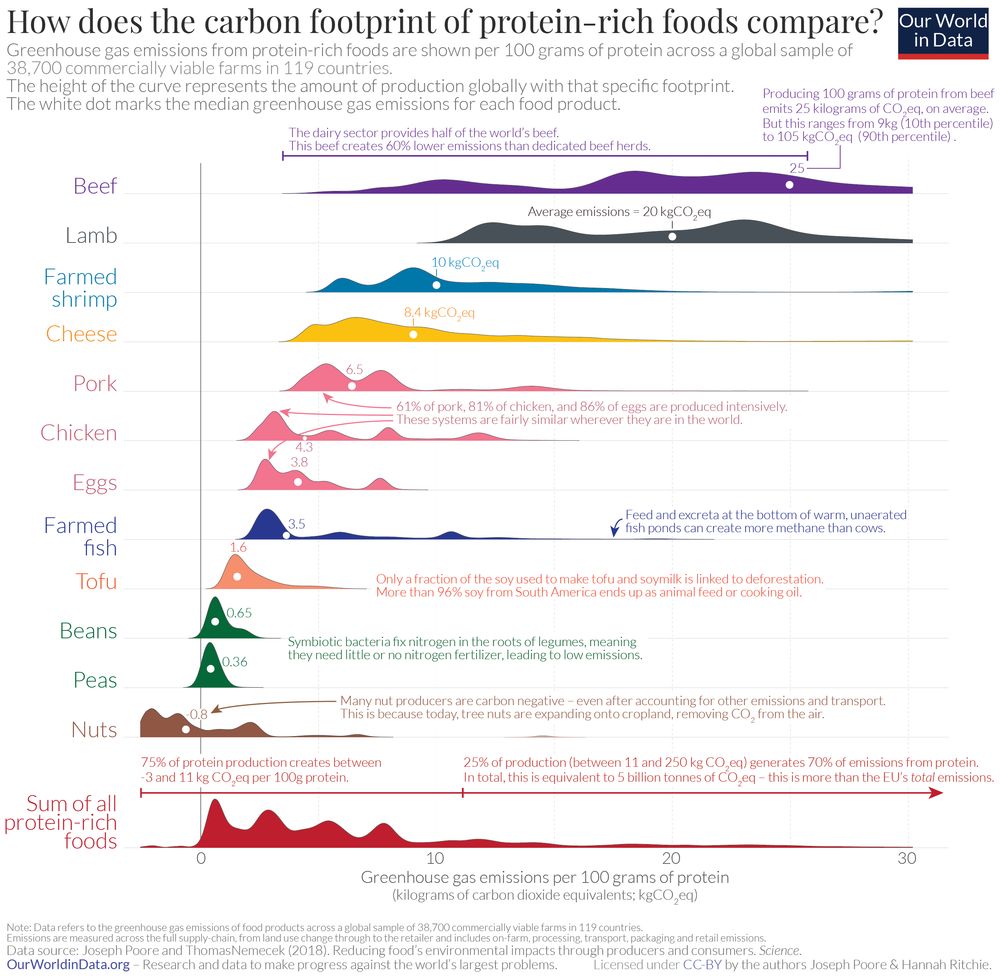
A graph comparing the greenhouse gas emissions of various protein-rich foods, measured in kilograms of carbon dioxide equivalents (kgCO2 eq) per 100 grams of protein. The chart features colorful curves representing different food items, with the height of each curve indicating the level of emissions associated with its production.
The bottom line is that plant-based protein sources still have a lower footprint than the lowest-impact meat products.
Sources are credited to Joseph Poore and Thomas Nemecek (2018) for the data and Our World in Data for the visualization
If you want to reduce the carbon footprint of your diet, less meat is nearly always better than sustainable meat.
13.05.2025 18:24 — 👍 198 🔁 74 💬 5 📌 12
With Bent Rech, @jcsvenning.bsky.social , @matthiaswaltert.bsky.social,
@robertoruggiero.bsky.social, Robert Buitenwerf, @econovoau.bsky.social @consbiogoe.bsky.social
29.04.2025 08:50 — 👍 3 🔁 0 💬 0 📌 0

From Grasslands to Forblands: Year‐round grazing as a driver of plant diversity
Our results indicate that typical, seasonal grazing may be counterproductive in terms of promoting plant diversity. We found the most effective management strategy for conserving species-rich forb co...
We also find that herbivores use more of the area in winter, highlighting the importance of year-round compared to summer grazing. This aligns nicely with a recent paper by @skjoldsoendergaard.bsky.social, finding higher plant richness under year-round but not summer grazing.
doi.org/10.1111/1365...
29.04.2025 08:50 — 👍 6 🔁 1 💬 1 📌 0
Our findings show that large herbivores complement each other in their habitat use, therefore reintroducing more diverse herbivore assemblages likely maximizes desired ecological impacts such as increased habitat heterogeneity and biodiversity.
29.04.2025 08:50 — 👍 6 🔁 1 💬 1 📌 0

Figure 2 from Rech et al. (2025) shows habitat selection estimates for cattle, horses, and buffalo, separated by feeding status and season.
Check out our new paper, led by Bent Rech: we investigate space use of semi-feral water buffalo, cattle, and horses in a Danish rewilding area. We found that the three species differ markedly in their seasonal habitat selection and responses to resources and infrastructure.
doi.org/10.1007/s002...
29.04.2025 08:50 — 👍 30 🔁 13 💬 1 📌 1

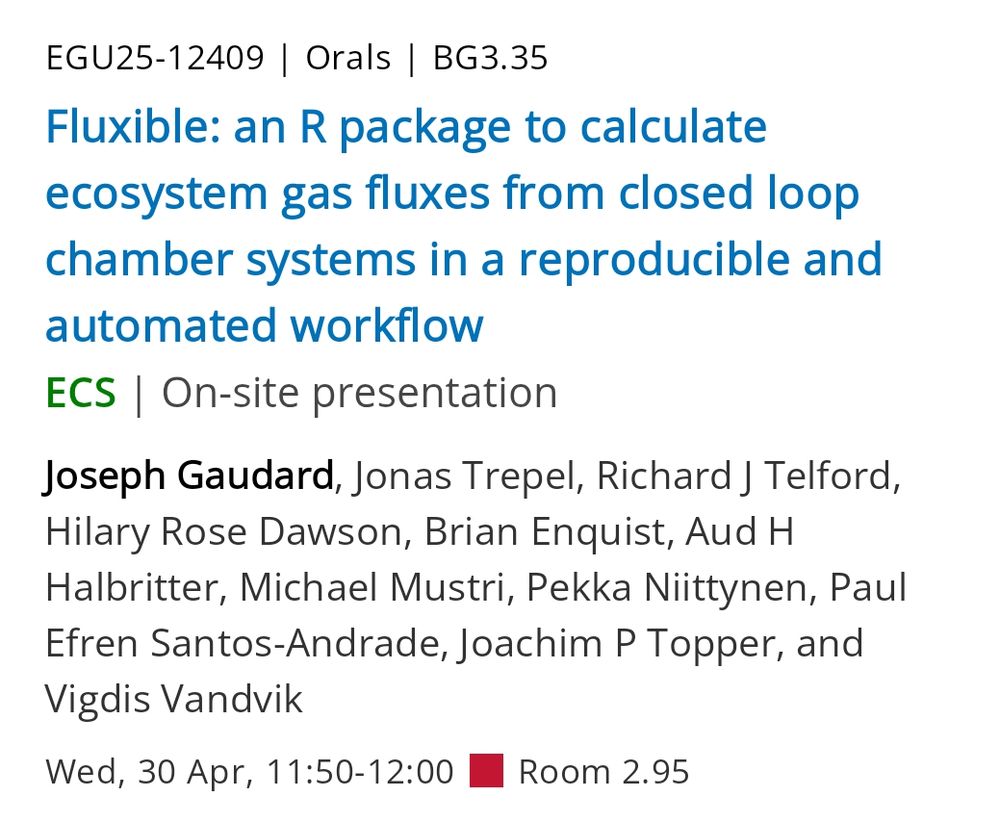
Looking for an R based solution to process ecosystem gas fluxes data from closed loop chamber systems?
Come to my #EGU25 talk!
🗓️2025-04-30
⌚11:50
📍2.95
meetingorganizer.copernicus.org/EGU25/EGU25-...
#rstats #OpenScience
29.04.2025 07:14 — 👍 10 🔁 6 💬 0 📌 0

Postdoc alert! Looking for someone to join our new savanna zoogeochemistry project with @ymalhi.bsky.social and Mark Robertson. Please circulate widely! Contact me if interested. #ecosystemecology #largemammalherbivores #termites
my.corehr.com/pls/ulivrecr...
28.04.2025 12:14 — 👍 8 🔁 17 💬 0 📌 1
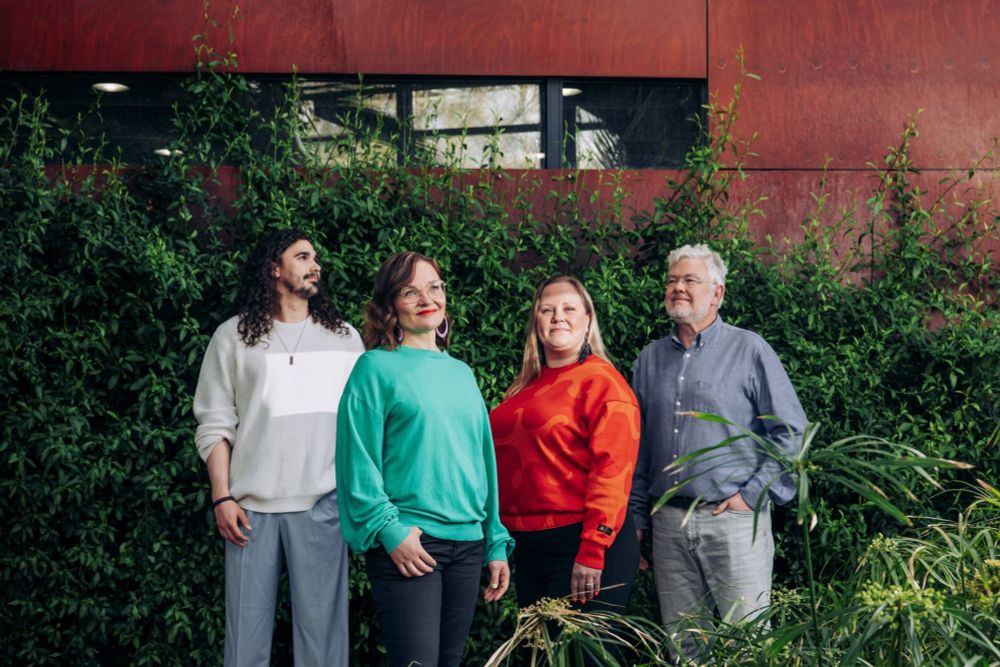
Doctoral Researcher, Biodiversity Change
Doctoral Researcher, Biodiversity Change
I am recruiting a doctoral researcher to conduct research on tundra plants and microclimates 🌱🌡️💧❄️ Call ends April 25! jobs.helsinki.fi/job/Helsinki...
16.04.2025 09:51 — 👍 22 🔁 27 💬 0 📌 0
not the nazi one on twitter
hi this is @annierau.bsky.social! my DMs are open
African Conservation Scientist. Christ follower. Danica’s hubby and Seb’s papa. Data analytics, Impact Evaluation and Wildlife Crime. Senior Lecturer in Statistics & Conservation at Nelson Mandela Uni, South Africa. PhD Oxford Uni. Runs on good coffee
Phd student at NUS geography. Studying C cycle in tropical ecosystems🌳🌴🌿
HigherJobz –
Find academic jobs, postdocs, phd, and research fellowships in higher education worldwide. #AcademicJobs #Postdoc #ResearchCareers #HigherJobz #
Ecology Research Group of Sabine Rumpf at Uni Basel
Alpine & Arctic Ecosystems | Plant diversity | Climate Change
More on us and our work at https://eco.duw.unibas.ch/
Intergovernmental Panel on Climate Change
PhD researcher at the University of Bergen, Norway
Earth scientist | spatial data analyst | spatiotemporal modelling | connectivity dynamics | mountains
Assistant Professor at Aarhus University 🛰️💫 interested in the Earth system 🏞️🏔️🌋 and remote sensing of biodiversity 🌿🌳🌲🌴; Swiss 🇨🇭 in 🇩🇰 previously in 🇺🇸 loving 🏔️📷🏃⛷️🏕️
Für das Bundesamt für Naturschutz (BfN) postet das Presseteam des BfN. Impressum: http://bfn.de/presseteam
We are the chair of global change ecology at @uniwuerzburg.bsky.social led by @christianhof.bsky.social. We study the variation and future of biodiversity under global change.
biozentrum.uni-wuerzburg.de/en/gce/
The International Biogeography Society. Fostering collaboration, awareness of & education in biogeography, for the study & conservation of the world's biota.
https://www.biogeography.org/
The German Centre for Integrative Biodiversity Research (iDiv). Posts by iDiv Media & Communications. Imprint: https://idiv.de/impressum
PhD Student in Ecology, University of Copenhagen. Interested in ecology, conservation, and restoration. Particularly interested in plants and megafauna.
It's me, the sea lady.
I study Sexual Selection, Host Sex/Parasite Interactions, and Behavior (also interested in Bio Ed!)
Currently looking for a postdoc position!
Biologist/Photographer/Artist/Jedi/Autistic
https://bfitzwater.wixsite.com/bfitzwater
Socken, Blaulicht und Krams, kanakischer Alman und von Rassismus betroffen.
Deutscher Zweiter Klasse.
Cultural scientist, social ecologist, advocating for living rivers & oceans, Deputy Head of Nature Conservation @umwelthilfe.bsky.social, otter lover 🦦, Team Wasserbüffel 🐃, Klimaschutz braucht Auenweiden & Seegraswiesen, sharing my own views (she/her)









